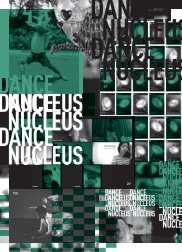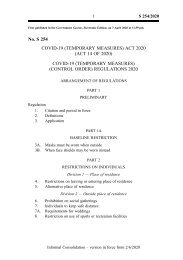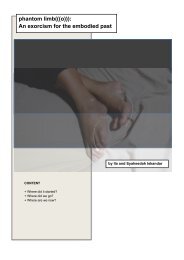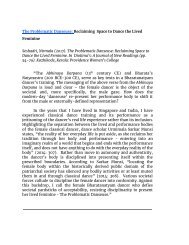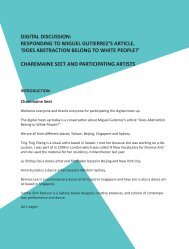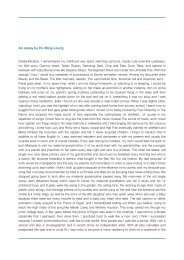Hermansyah Brotherhood
- No tags were found...
You also want an ePaper? Increase the reach of your titles
YUMPU automatically turns print PDFs into web optimized ePapers that Google loves.
AL ALBAB Volume 7 Number 1 June 2018<br />
of Gawai Dayak on May 20, 2017. 7 Previously, there were incidents at Gang<br />
Tanjung Harapan and Gang Landak Pontianak in November and December<br />
1999 which also almost spread into conflict between the two ethnic groups. 8<br />
Amid fears of a conflict that may involve two of the largest groups of people in<br />
West Kalimantan, there is a real sense of brotherly feelings toward the Dayaks<br />
among the Malays that have been recorded in their common memories.<br />
Very likely that consciousness is also present among the Dayaks. This kind<br />
of awareness has, among other things, succeeded in maintaining a relatively<br />
good relationship for so long between the two largest ethnic groups in West<br />
Kalimantan. This is a ‘capital’ for the people of West Kalimantan to maintain<br />
social harmony.<br />
There are various things that still remind local Malay of their Dayak origins<br />
into their collective memory, among others: aspects of trust, heritage, social<br />
relations, and cultural similarities. This collective memory has been passed<br />
down by generations. Unfortunately, behind this collective memory begins<br />
to be erased slowly either intentionally or not. This article will describe the<br />
collective memory of the Malays that may serve the bond of the two large<br />
communities in West Kalimantan. In addition, this paper will also present<br />
challenges or even threats to the existence of the collective memory.<br />
COLLECTIVE MEMORY<br />
There are various terms used to refer to “collective memory”. Some scholars<br />
prefer the term “cultural memory” (Erll, 2008), whereas most social historians<br />
and scientists use the term “social memory” (Olick, 1998; Fentress and<br />
Wickham, 1992) and “collective memory” (Lipsitz, 1990). In practice, this<br />
terminology differs due to different approaches to study it.<br />
Memory is an individual phenomenon that begins with the activity of<br />
remembering in a person’s head. Every meaning and symbol is born from<br />
individual human beings. We create symbols, and then interpret them.<br />
However, the process of interaction between individuals who create each<br />
other’s symbols and interpret them will produce a certain collectivity which<br />
Durkheim refers to as a social fact, or collectivity itself. The process of<br />
creating and giving meaning to the symbol, and then passing it on to the next<br />
generation, requires memory. The process of remembering so many people<br />
on a certain time scale, and then being passed on to the next generation, will<br />
form a specific collective memory structure. This collective memory will<br />
7<br />
https://suaranasional.com/2017/05/20/hampir-terjadi-bentrok-saat-pawai-gawaidayak/<br />
akses 2 Mei 2018.<br />
8<br />
See also Djajadi (2016).<br />
[ 58 ]




